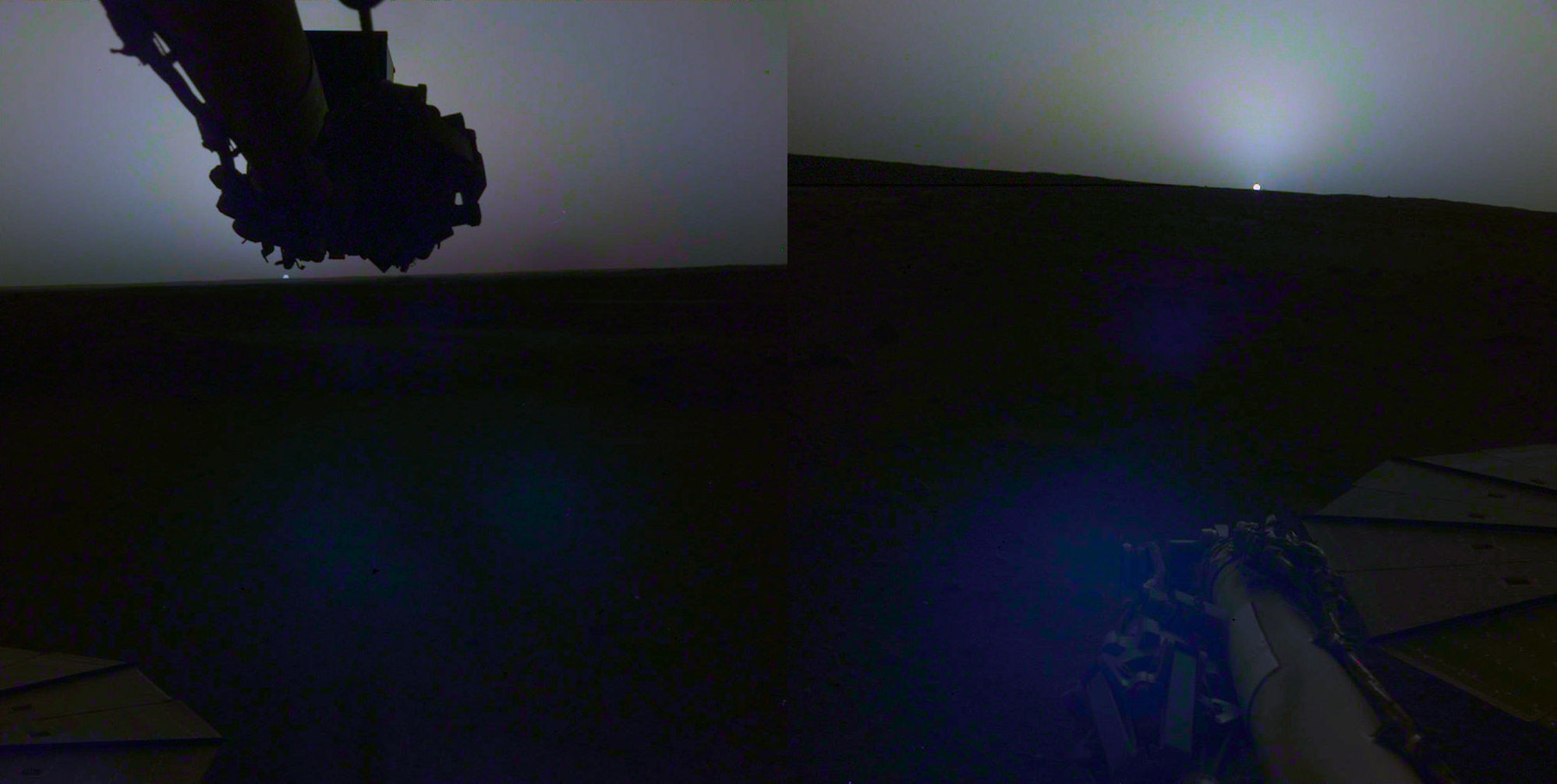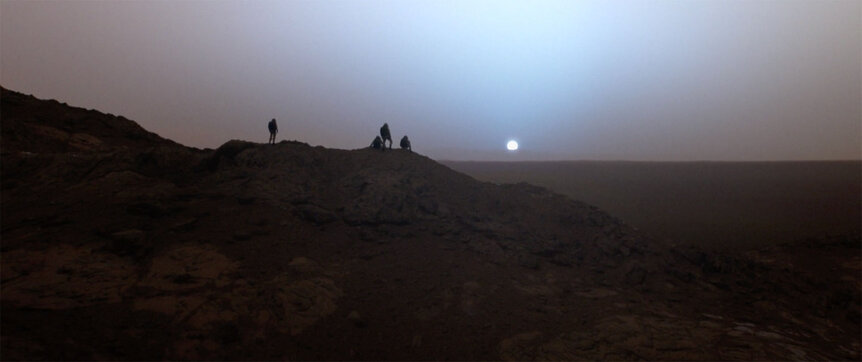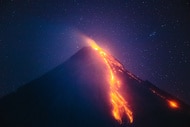Create a free profile to get unlimited access to exclusive videos, sweepstakes, and more!
Mars InSight sees a sunrise and sunset on the Red Planet

Mars Insight is a probe that landed on the fourth rock from the Sun on November 26, 2018, in a smooth, flat area called Elysium Planitia. Its mission is to investigate the interior of Mars using a fleet of instruments including a seismometer to measure marsquakes, a heat probe to see how heat flows through the rocks, radio antennae to measure how Mars wobbles as it spins (which is related to the composition of the deep interior of the planet), and more.
It also has two color cameras on board. One is the Instrument Deployment Camera (or IDC) on one segment of the nearly two-meter long robot arm, which takes detailed images of the area around InSight to help select where the various scientific instruments would be placed. The other is the Instrument Context Camera (ICC) which is located under the flat deck of InSight, and has a wider field of view to (can you guess, from the name?) provide more context for where the instruments are placed.
InSight has been measuring away since the instruments were deployed. The heat probe has hit a snag (or, literally, a rock), but the seismometer has been detecting quakes.
But what of the cameras? They’re still being used to look at the instruments to make sure everything is OK, but they have other uses, too.
Like, for example, taking gorgeous photos of the sunrise and sunset on Mars:
Oh, wow. A day on Mars is about 39 minutes longer than on Earth, so we distinguish them by calling a day/night cycle on Mars a sol. The images were taken on Sol 145 (using Sol 1 as the day InSight landed), which corresponded to April 24, 2019, around 5:30AM local (Martian) time for the sunrise photo and April 25 for the sunset one, about 13 hours after the sunrise photo.
Both were shot by the IDC. On the sunrise image you can see one section of the parasol-shaped solar panel and the end of the robot arm that has a grapple to grab the instruments. The sunset shot shows a different view of the robot arm and a section of the second solar array.
Besides being moody and beautiful, there are lots of interesting things about these shots that’ll give you, um, insight into what it’s like on Mars.
The first thing you’ll notice is that the sky is blue! That may surprise you, but it’s true… kinda. Getting pictures of Mars with accurate color is harder than you might think. The Sun is farther away than it is on Earth, of course, but that doesn’t affect the color too much. The real problem is the sky of Mars.
Mars has a thin atmosphere, with only about 0.6% the surface pressure we enjoy here on Earth. It’s very different than ours too, being mostly (95%) carbon dioxide with some nitrogen (a little less than 3%), argon (1.6%), and other trace gases. Earth’s atmosphere is 78% nitrogen and 22% oxygen, plus other gases at trace amounts.
This affects the color of the sky! On Earth, nitrogen molecules act like bumpers for sunlight. When a photon of light hits a molecule it bounces off, what physicists call scattering. Blue light is much more strongly affected by this than red, so blue light is scattered in every direction, meaning we see blue light coming from every direction. This makes the sky blue! The technical term for this is Rayleigh scattering.
However, things are different on Mars. Rayleigh scattering is much weaker due to the composition of the air there, so you wouldn’t expect the sky to be blue.
But things are a tad more complicated than that! There is a significant amount of extremely fine grain dust in the air of Mars. The dust on Mars has iron in it, making it look red (due to rust!), which is why so much of the Martian surface looks red. In the air, though, things get tricky. The reddish dust does color the sky. Moreover, a small amount of magnetite in the dust actually absorbs blue light, so you see less blue in the sky.
The dust also scatters sunlight, but due to its larger size than air molecules the color dependence isn’t so strong. All colors get scattered more or less evenly, which would normally make the sky white. However, including the blue absorption and red dust makes the noontime sky yellowish, or butterscotch in color.
Note I said “noontime”, when the Sun is high in the sky. When it’s low to the horizon things change. You’re looking through a thicker layer of dust near the horizon, which means lots more dust in between you and the Sun. While there’s not a strong wavelength dependence on scattering, there’s still some. Blue light near the Sun is scattered a little more than red, so the sky near the Sun looks blue. This effect is magnified by looking through so much more dust at sunrise and sunset, making them look bluer.
Weirdly, that’s the exact opposite of Earth! The sky is blue during the day, and we see more red at sunrise and sunset (because the Earth’s air is so much better at scattering blue, it all gets scattered away when you look near the horizon, allowing redder light through).
It just goes to show you that things you take for granted can change, radically, just through the simple process of going to another planet.
I’ll note that earlier Mars missions have taken sunrise and sunset photos as well; folks at JPL kindly assembled them into a Twitter moment for your interplanetary viewing pleasure.
Still, when I saw the InSight images, even though I’ve seen the others, I was struck by them anew. I’m really glad that we have spacecraft on Mars to see these spectacular views, but I still must wonder when living human eyes will see them directly as well. 15 years from now? 20? I don’t know.
But I suspect it will happen. The question reminded me strongly of Erik Wernquist’s magnificent short video “Wanderers”, showing astronauts watching a sunrise (using an image from the Spirit rover for inspiration):
My oh my. What I would give to see such a thing for myself.
And because everyone should watch it, here is the video “Wanderers”, an inspiration to all who feels that wanderlust, that compulsion to experience the solar system for themselves.
















